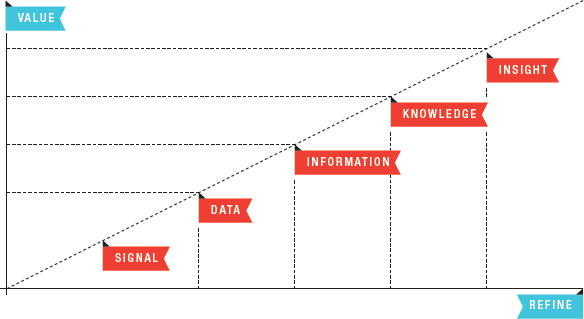CHAPTER 7
DATA VISUALIZATION INTERFACES
In previous chapters, we have discussed various applications for creating a visual story with data and information, most of which are based on a narrative approach. In this chapter, we will look at more explorative applications, specifically the use of data visualization in interactive interfaces. Companies and brands can use these types of visualizations in web applications, software, or mobile apps, and the visualizations can be executed in a variety of different ways. These interfaces display data in ways that provide the viewer with information that, with viewer analysis, can be readily transformed into insight.
Dave Campbell, a Technical Fellow at Microsoft who works on solving problems surrounding big data, presented one model of this transformation. We see the evolution from Signal > Data > Information > Knowledge > Insight as refinement increases, outlined in Figure 7.1. This process is similar to the DIKW Hierarchy— typically used in a more philosophical context—which presents the key components of Data > Information > Knowledge > Wisdom.
Figure 7.1: Dave Campbell’s model of information refinement.

Displaying data in interactive visualizations makes it easier to transform this data into information because it’s grouped in meaningful ways that allow viewers to recognize trends, patterns, and correlations, which are also referred ...
Get Infographics: The Power of Visual Storytelling now with the O’Reilly learning platform.
O’Reilly members experience books, live events, courses curated by job role, and more from O’Reilly and nearly 200 top publishers.

